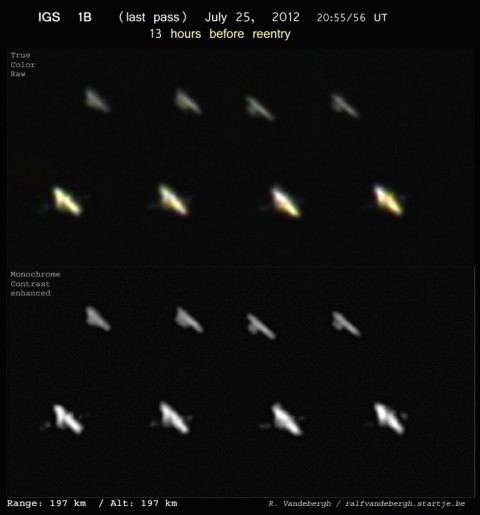 | ||
Information Gathering Satellite (情報収集衛星, Jōhō Shūshū Eisei) is a satellite in a Japanese spy satellite program. It was started as a response to the 1998 North Korean missile test over Japan. The satellite program's main mission is to provide early warning of impending hostile launches in the neighborhood. This program is under direct control of the cabinet. All of the Information Gathering Satellites were launched by an H-IIA rocket from Tanegashima Space Center. However, Earth observation is a rather new field for Japan. The first Japanese mission in this field MOS-1 was launched only in 1987.
On 28 March 2003, presumably partly in response to North Korea's launch of a Taepodong-1 rocket over Japan in 1998, and partly to provide a source of satellite images other than through cooperation with the US, where the US charged roughly USD $10,000 for each satellite image, Japan launched a radar and an optical spy satellite, officially known as IGS-1A and IGS-1B. These satellites follow one another at 37-minute separation in a 492 km orbit, which passes over Pyongyang at 11:22 each day, according to observations collected on the seesat-L mailing list.
The program suffered a big setback when Japan lost the second pair of satellites because of an H-IIA launch failure on 29 November 2003.
Except the satellite which failed in launching, a second optical surveillance satellite IGS 3A was launched on 11 September 2006.
A third optical satellite IGS 4A and a second radar satellite IGS 4B were launched on 24 February 2007. IGS 4A is a more advanced and experimental optical satellite.
A fourth optical satellite IGS 5A was launched on 28 November 2009. This satellite has the resolution that is higher than previous generation.
Late March 2007, the first SAR satellite in the series, IGS 1B, suffered a critical power failure. The satellite has since been observed to steadily come down and was clearly no longer under control. An uncontrolled re-entry of this satellite occurred on July 26, 2012. Since summer 2010, another of the SAR satellites, IGS 4B has also been unable to carry out its monitoring functions.
